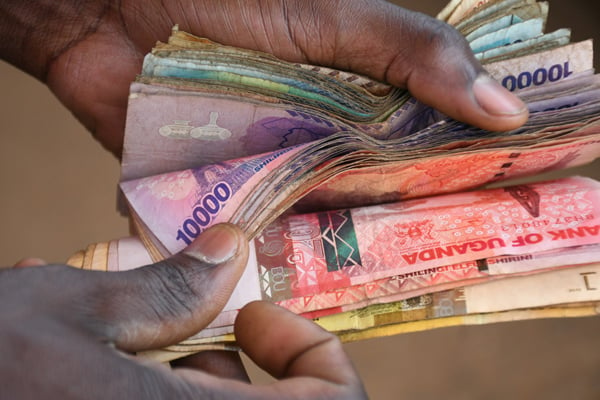Increased demand for cash drives up money in circulation

Bank of Uganda spent Shs171.9b as cost of issuing money due to an increase in demand for cash. Photo | File
What you need to know:
- Of the Shs6.8 trillion, the report indicates, Shs6.6 trillion was recorded as banknotes while Shs6.84b were coins.
Money in circulation grew by Shs818.9b, representing a 13.6 percent annual increase for the period ended June2022, according to Bank of Uganda.
In details contained in the Bank of Uganda 2021/22 annual report, money in circulation increased from Shs6 trillion in the period ended June 2021 to Shs6.8 trillion in the same period ended June 2022.
Of the Shs6.8 trillion, the report indicated, Shs6.6 trillion was recorded as banknotes while Shs6.84b were coins.
The growth was much larger compared to the 5.62 percent registered for the period ended June 2021 but substantially smaller than the 24.13 percent in the period ended June 2020.
Bank of Uganda indicated that the cost of issuing money increased by Shs24.4b or 16.5 percent from Shs147.5b to Shs171.9b due to an increase in demand for cash, following the reopening of the economy and the rise in inflation.
The report also noted an increase in withdraws of banknotes and coins by commercial banks, which during the period rose by Shs1.4 trillion or 15.8 percent from Shs8.8 trillion to Shs10.2 trillion, reflecting the increased demand for money caused by a rise in inflation.
During the period, deposits grew by 10.5 percent from Shs8.5 trillion to Shs9.4 trillion.
The value of currency processing, Bank of Uganda indicated, had increased by Shs614b or 6.8 percent from Shs9 trillion in in the period ended June 2021 to Shs9.6 trillion while the value of re-issued banknotes increased byShs51.3b or 2.4 percent.
The Central Bank indicated that there is anticipated increase in net demand for money characterized by more withdrawals than deposits due to inflationary pressures and the projected expansion of the economy.
However, it noted that despite the expected increase, the rate of a rise in the cost of currency issuance may be cushioned by increased interbank cash collaboration to maximise efficiencies in the cash value chain, and continued sensitisation of the public on cash handling in the coming year.
The growth of money in circulation comes at a time when the Central Bank has noted an increase in all digital payment platforms.




